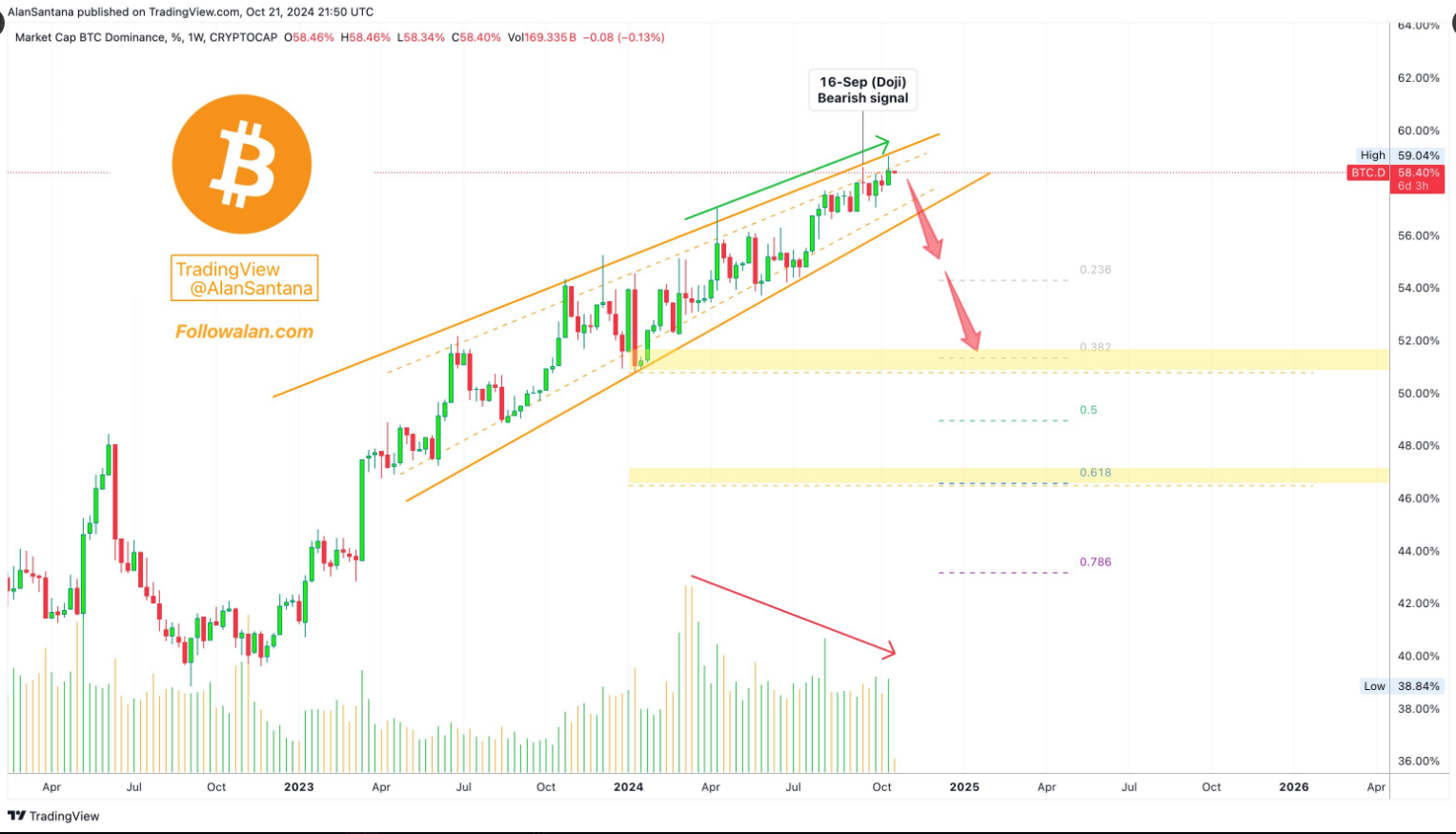Este artículo también está disponible en español.
The cryptocurrency market’s recent dominance by Bitcoin has decreased below 50%, indicating a potential adverse trend as retail activity increases. This change prompts inquiries regarding market dynamics and investor sentiment.
Bitcoin’s dominance has been a critical indicator of whether the market is in a bull or negative cycle throughout history. As Bitcoin’s dominance is growing, usually, it means a defensive market where investors would prefer the relatively safer alternative of Bitcoin rather than altcoins.
Related Reading
Whereas a fall usually means the investor is likely to increase his risk and very often prefers to invest in altcoins for possible higher returns.
Crypto analyst Alan Santana identified three significant warning signals for Bitcoin’s dominance in an X post on Tuesday, as retail investors resumed trading after an extended period of inactivity.
#BTCdominance 🅱️ 3 Bitcoin Dominance Bearish Signals + Fibonacci Time Calculations
I would like to show here mainly three signals that can be considered bearish on this chart, Bitcoin Dominance (BTC.D).
1) There is a Doji on the 16th of September. Coming at the top of a trend… pic.twitter.com/enQAeVo5MB
— Alan Santana (@lamatrades1111) October 21, 2024
The Increase In Retail Activity
As Bitcoin’s supremacy wanes, retail investors are getting increasingly active. Usually, this rise in retail involvement comes with a decline in Bitcoin’s market share since these investors transfer to altcoins in search of better earnings.
The current situation is reminiscent of previous cycles, during which the increase in retail interest resulted in a substantial decrease in Bitcoin’s dominance. For example, Bitcoin’s dominance declined significantly during the 2021 bull market as new altcoins gained momentum, diverting attention from the original cryptocurrency.
General Shift In Investor Mood
Market experts say that this trend isn’t just a one-time thing; it’s a sign of larger changes in how investors act. As non-fungible tokens (NFTs) and decentralized finance (DeFi) have grown, altcoins have become more appealing.
A lot of investors think that networks like Ethereum, which support smart contracts and decentralized apps, are more flexible than Bitcoin these days. This change could be a sign of a bigger shift in how people think about and use cryptocurrencies.
Related Reading
Fluctuation Trends
Bitcoin has seen a trend of fluctuations in dominance since its inception in 2009. Starting with an almost 100% market share, it began to decline slowly with the introduction of more altcoins.
Bitcoin fell crucially during both the ICO boom of 2017 and the DeFi surge of 2021, at which time it fell to below 40% dominance. Given such historical precedents, this might represent another such phase where altcoins do outperform Bitcoin, especially when retail interest is growing.
Experts believe that this can cause the crypto markets to become even more volatile in the future if this continues. Declines in dominance are often precursors to speculative trading, which subsequently causes prices of both Bitcoin and altcoins to fluctuate wildly.
The current level of Bitcoin dominance functions as a gauge of the general market sentiment. Many speculators are reassessing their strategies as it continues to decline.
Featured image using Dall.E, chart from TradingView
Source: https://www.newsbtc.com/news/retail-surge-sparks-bearish-outlook-as-bitcoin-dominance-declines/
